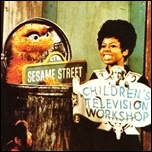 It is not often that this blog specifically highlights programs from overseas but there is one show that reaches a certain milestone on Australian television this week that it would be remiss not to acknowledge it.
It is not often that this blog specifically highlights programs from overseas but there is one show that reaches a certain milestone on Australian television this week that it would be remiss not to acknowledge it.
Sesame Street, a production of the New York-based Children’s Television Workshop (now the Sesame Workshop), made its US debut in November 1969. As well as being a hit with viewers, the series won instant acclaim with three Emmys in its first year. As at 2009 it has won a total of 118 Emmy awards, the most of any television program.
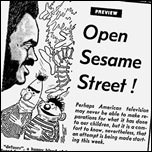 The program made its Australian debut on ABC on Monday, 4 January 1971 at 8.00am – with a repeat at 4.30pm. By the time the show had debuted in Australia Sesame Street was already showing in 50 other countries. For the next 15 years, ABC’s broadcast day was started each weekday by Sesame Street.
The program made its Australian debut on ABC on Monday, 4 January 1971 at 8.00am – with a repeat at 4.30pm. By the time the show had debuted in Australia Sesame Street was already showing in 50 other countries. For the next 15 years, ABC’s broadcast day was started each weekday by Sesame Street.
Sesame Street was started with the goal to entertain and educate pre-school age children on basic literacy, numeracy, analytical and social skills – by means of employing the methods already familiar to a television-savvy culture. If commercial breaks can be used to sell junk food and plastic merchandise to children, then the concept can also be used to promote the use of the alphabet and basic mathematics. Sesame Street therefore used the culture of television to get its message across – by having episodic stories based around the human and Muppet characters at the fictional street interspersed with ‘breaks’ of snappy animations, short film segments, music performances and send-ups of popular culture that would be played in rotation as normal commercials would appear on television.
The series has also tackled breaking down cultural barriers, by featuring a multicultural cast and educating viewers on the basics of different cultures and languages such as Spanish, and educating on matters such as adoption, disability and death – the latter touched on by the sudden departure of store owner Mr Hooper, following the passing of actor Will Lee in 1982, as a means of providing an honest discussion of the topic.
Such is the power of the ‘commercial’ format employed by the show that some of the catchphrases or themes used to educate children will still resonate with those children now as adults – how many adults can still recite “a load of bread, a container of milk, and a stick of butter” or sing the tune that accompanied the pinball animations used to count the numbers 1 through to 12?
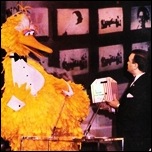 The popularity of Sesame Street led to the 7-foot-tall Big Bird visiting Australia in 1980 for the TV Week Logie Awards (pictured, with host Bert Newton), and in more recent years the character of Elmo has made numerous appearances on programs including Rove, The 7PM Project and The Circle, either in the studio or via satellite. As well as Big Bird and Elmo, Sesame Street has featured a long list of one-off and recurring Muppet characters – with such characters as flatmates Bert and Ernie, Kermit the Frog, Oscar the Grouch, the Cookie Monster, Grover and The Count among some of the show’s most familiar and long-serving characters.
The popularity of Sesame Street led to the 7-foot-tall Big Bird visiting Australia in 1980 for the TV Week Logie Awards (pictured, with host Bert Newton), and in more recent years the character of Elmo has made numerous appearances on programs including Rove, The 7PM Project and The Circle, either in the studio or via satellite. As well as Big Bird and Elmo, Sesame Street has featured a long list of one-off and recurring Muppet characters – with such characters as flatmates Bert and Ernie, Kermit the Frog, Oscar the Grouch, the Cookie Monster, Grover and The Count among some of the show’s most familiar and long-serving characters.
Some of Sesame Street’s original human cast members and characters are still with the series forty years later. Loretta Long (pictured, above, with an orange Oscar the Grouch in 1971) has played the role of Susan since the show’s beginning.
The characters of Bob (Bob McGrath) and Susan’s husband Gordon (played by Roscoe Orman since 1973) have also been in the series since the start. The character of Luis (Emilio Delgado) first joined the show in 1971 and the character of Maria (Sonia Manzano) was first written into the show in 1974. Luis and Maria later engaged and were married in the show in 1989 and Manzano’s later real-life pregnancy was incorporated into the show.
For many years Sesame Street and Australia’s Play School (which had launched in 1966) were the flagship of ABC’s children’s television schedule – with both programs screening twice each weekday. The afternoon screening of Sesame Street was shifted from 4.30pm to 3.00pm in the early 1980s to enable the broadcaster to widen its scope of children’s programming in the after school hours.
The success of Sesame Street in the US led to another series in the early 1970s, The Electric Company, aimed at improving literacy skills in early school-age children. The Electric Company had some exposure in Australia, through some channels in the 0-10 Network and later on SBS.
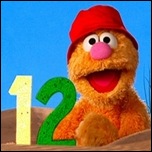 The Sesame Street concept has being franchised widely around the world, with versions produced in Brazil (Vila Sésamo), Egypt (Alam Simsim), India (Galli Galli Sim Sim), South Africa (Takalani Sesame), Northern Ireland (Sesame Tree) and Germany (Sesamstrasse) amongst many others, and an Australian version – Open Sesame – was produced by pay-TV channel Nick Jr and introduced the first ever Australian Muppet, Ollie (pictured).
The Sesame Street concept has being franchised widely around the world, with versions produced in Brazil (Vila Sésamo), Egypt (Alam Simsim), India (Galli Galli Sim Sim), South Africa (Takalani Sesame), Northern Ireland (Sesame Tree) and Germany (Sesamstrasse) amongst many others, and an Australian version – Open Sesame – was produced by pay-TV channel Nick Jr and introduced the first ever Australian Muppet, Ollie (pictured).
These days the prominence of Sesame Street on ABC is dwarfed somewhat, purely by the sheer volume of children’s programming that now comes out of ABC’s three free-to-air channels and with various competing children’s channels on pay-TV – but it can currently be found each weekday at 8.30am on ABC1 and at 12.00pm on ABC2.
Pictures: The Age, 31 December 1970. TV Times, 20 January 1971. TV Week, 29 March 1980.
Source: Sesame Workshop, Wikipedia.
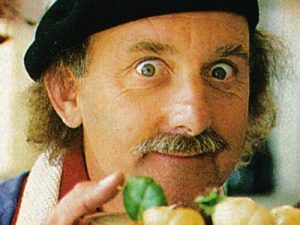
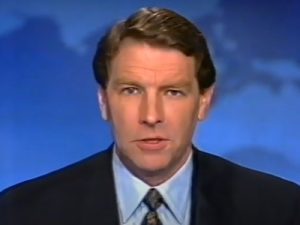
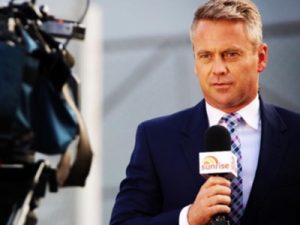
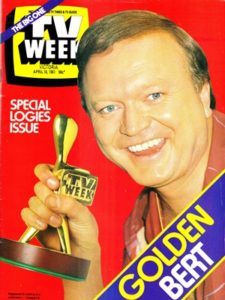
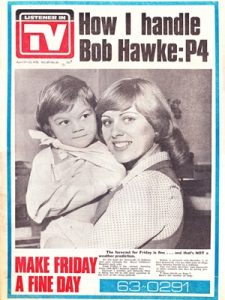
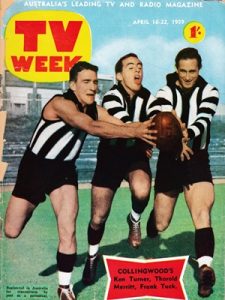
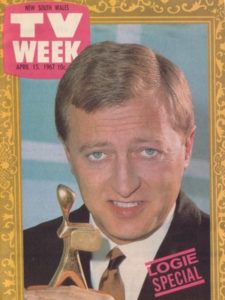
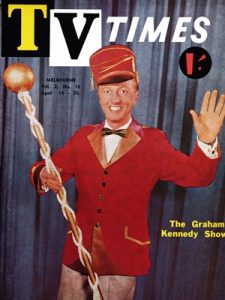
A generation of Australian children have grown up unsure if z is pronounced zee or zed.
awww boo hoo. They will work it out for themselves, everyone else has
Exactly!
Hi Andrew.
Yes, of course! How could I have forgotten that?? I remember watching the show as a kid and having to be reminded by my parents that 'zee' is incorrect.
Does anyone here remember seeing a short called Crack Master? (more info here: http://lostmedia.wikia.com/wiki/Sesame_Street_%22Crack_Master%22_Short_from_Episode_979_%281977%29
Trying to figure out if it ever aired in Australia…
In 1986, Sesame Street aired a segment featuring things like robots and rockets using the Janko Nilovic composition Portrait d’Un Robot.
Longtime Play School fans will know that Play School used a bit of Portrait d’Un Robot for their rocket clock music.
Here’s question:did Play School use Portrait d’Un Robot for the rocket clock before Sesame Street?
I know I haven’t seen any Play School clock segments pre-1995.
I assume the ABC might have selected pre-1985 Play School eps archived-the NFSA has a 1984 one.
Here’s a 1980’s clock segment using Portrait d’un Robot:
http://m.youtube.com/watch?v=SqPiKdbTbK0&desktop_uri=%2Fwatch%3Fv%3DSqPiKdbTbK0
I have seen the Sesame Street segment that uses the full Portrait d’un Robot piece of the rocket clock music:
http://m.youtube.com/watch?v=U1Rhm7kp-tk&desktop_uri=%2Fwatch%3Fv%3DU1Rhm7kp-tk